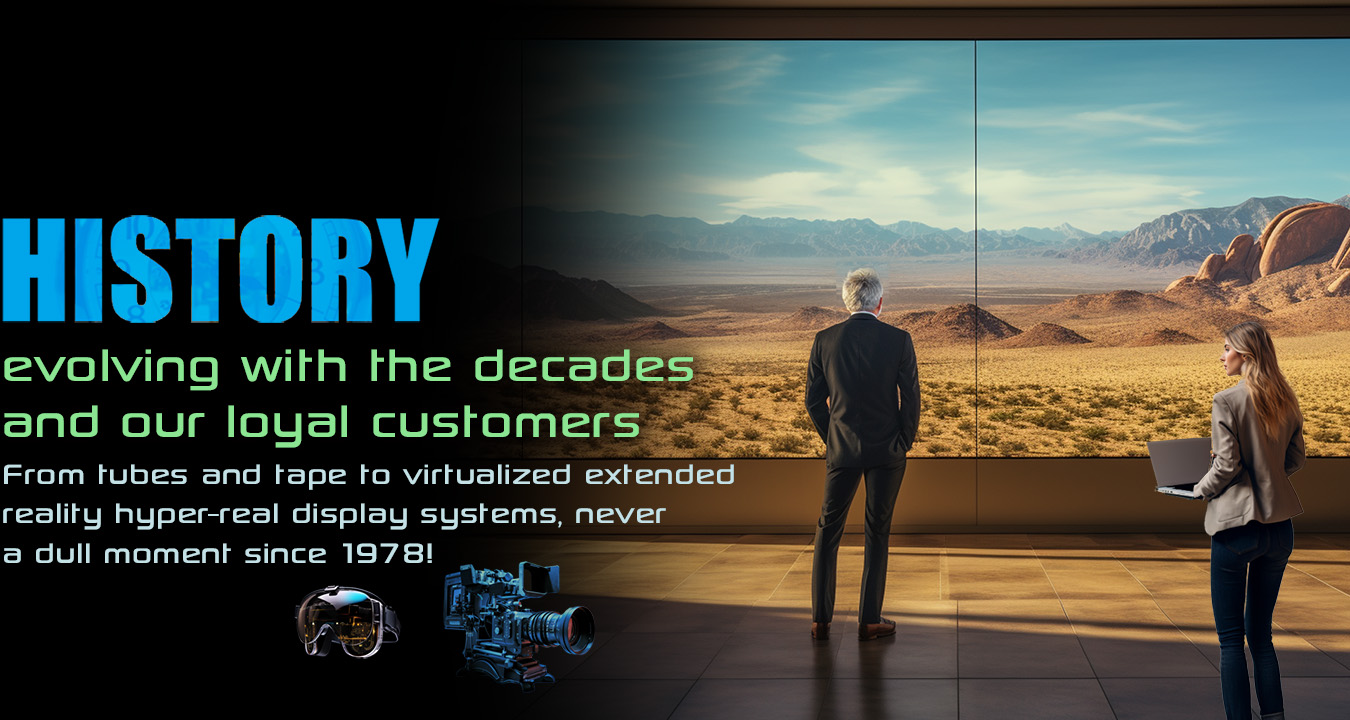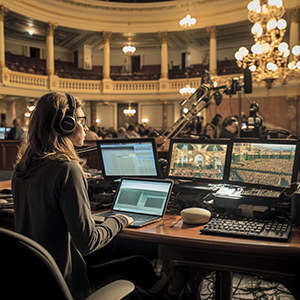
A brief history of EAR
EAR, established in 1977 as EAR Sound Consultants, initially provided high-quality audio equipment to Phoenix musicians. In the 1980s, the company rebranded to EAR Professional Audio Video, evolving into a reseller and national integrator of products and services for professional audio and video. EAR is now one of the longest-lived and most progressive broadcast technology companies in North America.
About this history page:
This history is really a celebration of the hundreds of people who’ve helped shape EAR and keep things running smoothly for nearly 50 years. To all of them, we offer a heartfelt “thank you!” If you’ve ever wondered how a long-running professional technology company not only survives but thrives through nonstop industry change, you’ll probably find this story both informative and fun. EAR’s journey is powered by a love of technology and innovation—riding every wave from the earliest breakthroughs to today’s AI and cloud-driven tools. Here, we highlight the big shifts that reshaped the industry and how EAR embraced each one along the way.
THE 1980’s
In the early 1980s, audio and video gear was changing fast—and EAR was right in the middle of it. We supplied professional audio solutions for everything from music studios and live sound to broadcast and industrial projects. Along the way, we had the privilege of working with some truly incredible clients: Paul McCartney, ABC, Playboy Club International, Robert Altman, Earl Scruggs, Seal, K.D. Lang, the Steve Miller Band, and many more we’re grateful for. Even during the economic recession of the early ’80s, EAR managed to stay strong and independent—no outside investment, just determination and a team that refused to quit.
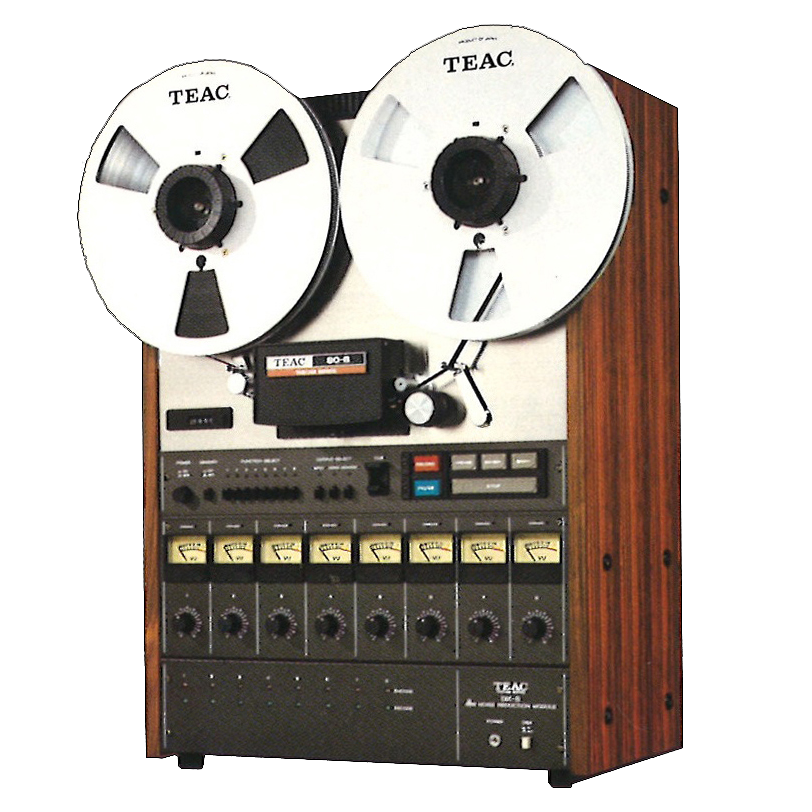
Circa 1981:
The 8 track 1/2″ tape machine that launched a new era in personal recording and the start of EAR Professional Audio Video.
In the fall of 1983, EAR settled into its longtime home at 27th Street and East McDowell Road in Phoenix, carving out a unique place in the Southwest’s professional audio scene. Local music stores and video resellers often sent clients our way for help with tricky audio workflows—especially syncing audio and video tape systems. A year earlier, in 1982, we built one of the first affordable 1/2-inch 8-track–to–film sync setups for filmmaker Robert Altman, using a BTX Shadow controller and a Tascam 80-8. It was a big leap from the more cumbersome film-based systems of the time. Mastering this kind of sync work took serious engineering skill and constant fine-tuning, and EAR eventually brought similar technology—and that hard-won expertise—to major post-production houses across the Southwest.
Before the mid-1980s, building a recording studio was a huge undertaking— you needed big budgets, big rooms, and engineers who knew how to wrangle noisy, limited multi-track setups. Then came the shift from bulky 2-inch tape machines to compact digital recorders, and everything changed. EAR jumped in early with new gear from Yamaha, JBL, Tascam, and Otari, helping clients get better sound quality at a fraction of the cost. This digital leap made starting a studio far more affordable and marked the beginning of the end for the giant analog rigs of the past.

Above: In the days before ecommerce (or the internet for that matter) EAR sold hundreds of audio processors every year. They would arrive by the pallet and sell quickly. Today we’re back to selling products by the pallet through ecommerce and no longer need to keep multiple showrooms running to accommodate client’s needs.
By 1989, EAR was rolling out computer-based editing systems from Dyaxis and Digidesign—some running on Apple computers and others even controlling full-sized audio consoles. They were impressive for their time, even if they seem simple today. The idea that you could jump between edits almost instantly felt downright futuristic, and the now-ordinary “undo” button was a game-changer. Looking back, it was the perfect preview of the digital revolution just around the corner.
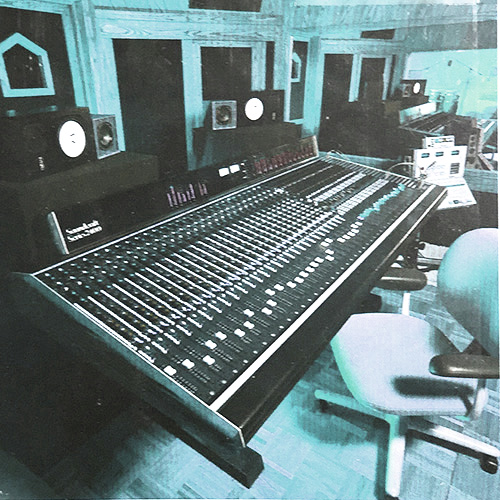
Circa 1991:
EAR’s main showroom . Featuring Otari 2″ 24 tracking with Soundcraft console.
EAR was also keeping a close eye on the fast-changing video world, as new compact tape formats and affordable editing gear from JVC, Panasonic, Sony, Grass Valley, and Ampex started reshaping the industry. As audio gear got smaller and video editing took big leaps forward, EAR made a strategic move into the first widely available nonlinear editing systems. By the late ’80s, we had fully expanded into video and officially became EAR Professional Audio/Video in August 1987. Around that time, a young company called Avid was turning heads with its new Media Composer—and EAR proudly became the Southwest’s first Avid reseller. Today, we’re honored to still be their oldest reseller.
THE 1990’s
Throughout the 1990s, EAR’s strength wasn’t just delivering equipment—it was delivering real solutions. As the industry shifted, we adapted too, offering both traditional gear and the new wave of computer-based systems.
Like any major tech change, some people jumped into hard-disk editing right away, while others weren’t quite convinced of its early “subjective” quality. Still, many customers quickly embraced the faster, more affordable world of nonlinear editing. It would take a few more years before hard-disk systems reached full broadcast quality, but the momentum was unmistakable.
And just as nonlinear editing was gaining traction, tape technology made one last bold move. In 1991, a young company called Alesis launched the ADAT—a digital audio recorder built on a VHS-style transport, offering eight tracks at a price that shocked the analog world. EAR quickly became a national leader in providing complete ADAT-based studio packages, from mixers and processors to all the necessary wiring.

Circa 1991:
Alesis introduced the ADAT, a digital tape format using a hybrid cassette based on the VHS format. Paired with a Mackie console, this innovation created a sub-$10,000 entry point for a complete home studio. EAR sold hundreds of these systems in the 1990s.
In 1989, EAR became the Southwest’s first professional reseller for Apple, Avid, and Digidesign—showcasing the brand-new Digidesign “Pro Tools” system (which Avid would later acquire). At about $6,000, it was considered a great deal, especially compared to professional Ampex, MCI, or Otari tape decks that ran anywhere from $4,000 to $25,000 each. With its 16-bit resolution and approachable price, Pro Tools quickly became a favorite among smaller studios and production houses.
Back then, you still had to finish your edited project back onto tape—a process called “layback”—but even so, the savings were undeniable. Buying one tape deck instead of several more than covered the cost of the computer and software.
In 1993, Avid—already known for its $100,000 high-end editing systems—introduced its first truly “affordable” option: Media Suite Pro. As the Southwest’s first Avid reseller, EAR hit the ground running, and the new MSP quickly became a standout success. At around $30,000, it was a genuine bargain when you considered that a single professional Sony tape deck could cost $15,000–$25,000 on its own. With its approachable price and AVR25 resolution, Media Suite Pro became an instant favorite for smaller production companies and schools.

Circa 1995:
Main showroom featuring the emerging workstation market for non-linear audio and video editing. Avid “Media Suite Pro”, Digidesign “Pro Tools” were quickly replacing tape based editing.
In July 1995, EAR had a bit of fun with the “Symulator”—a concept ad imagining a handheld device that could control audio and video, long before tablets like the iPad existed. The ad even drew interest from overseas companies who wanted to know more, though it was purely a creative idea at the time.
The mid-’90s were full of big wins and big shake-ups as technology evolved at lightning speed. With the rise of ADAT and mass-produced gear, the direction was clear: powerful tools were becoming far more affordable. Artists who once needed pricey studio equipment and a team of engineers could now make high-quality recordings from home with compact, portable gear.
If the “get more for less” trend continued, personal home studios would soon become affordable for all. EAR realized that to survive, it had to adapt. The professional audio recording market was shifting toward personal “project studios,” prompting EAR to evolve and thrive in this new landscape.

Circa 1990:
The remodel of East McDowell offices. After 40 years in our 3rd location, we’re moving to a new location in 2025!
THE 2000’s
By the early 2000s, EAR had fully shifted to nonlinear, disk-based editing systems and moved away from traditional tape. We even branded ourselves as “The Workstation Company,” adapting to major industry changes and continuing to grow by leaning into new technology.
But the pace of change was fast—and sometimes harsh. Revolutionary products like the Alesis ADAT rose quickly and disappeared just as fast. By 2001, with market trends shifting, Alesis could no longer stay profitable and closed its doors on April 27. It became increasingly common for industry disruptors to shine brightly, then be replaced by the next big thing. And it wasn’t just hardware—streaming and computer-based software were taking hold, turning yesterday’s prized tube processors into today’s software plug-ins.
By the late ’90s, the big mechanical tape machines of earlier decades were quickly giving way to computer-based recording and editing. Hard-disk systems offered better sound, more features, and a much faster, easier workflow. “Nonlinear editing” became the buzzword of the moment—though today, with tape behind us, we barely use the term at all.
The industry had officially entered the computer age, and EAR adapted right along with it. Our service department, once focused on cleaning and tuning 400-pound tape decks, transformed into a digital hub for configuring computer-based systems. With companies like Avid and Digidesign leading the charge, many editors realized they could replace hundreds of thousands of dollars in tape-based gear with a single workstation. The era of the massive production studio was winding down, and smaller, more affordable edit suites were finally able to compete.
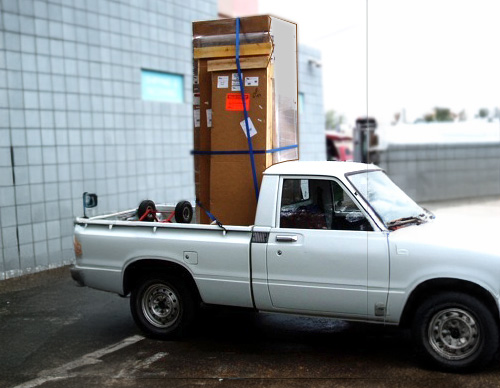
Circa 1997:
Terabyte System sold to animation gaming company for $225,000. Weighing in at 450lbs (205Kg) in a 7 foot computer rack, the system was connected via “blazing” 100 Mbps (mega-bits) network switch.
In the 2000s, affordable HD production gear and nonlinear editing systems transformed the industry, and EAR embraced the shift by branding itself as “The Workstation Company.” We quickly became the go-to source for audio and video editing systems throughout the Southwest. Syncing older mechanical tape decks with new digital tools could be tricky, but EAR’s technical know-how kept everything running smoothly. During this boom in post-production, we had the privilege of supporting projects for artists like Paul McCartney, Lyle Lovett, Bonnie Raitt, and Justin Timberlake—proof that our expertise was hitting the mark.
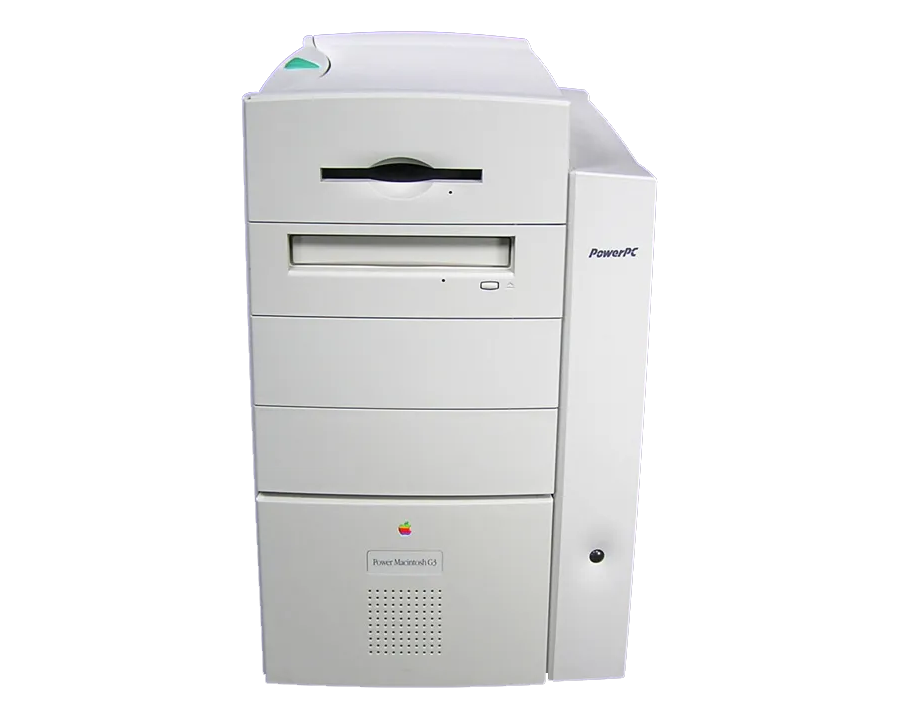
Circa 1995:
Apple G3 beige computer. The work horse audio and video editing workstation due to it’s ability to support internal 3rd party hardware cards. Paired with an Avid 2GB external hard drive ($2,000 each) they were a formidable editing platform. EAR sold 100’s of these through the 1990’s and into the early 2000’s.
Around 2000, Apple’s G4 systems dominated the editing world, becoming the go-to hardware for companies like Avid and Media 100. For nearly a decade, Apple was essentially the only mature professional computer platform, which put pressure on manufacturers to develop Windows alternatives. Steve Jobs, sensing the moment—and leaning on strong ties with the film industry—responded by creating Apple’s own lineup of editing, effects, and authoring tools.
Apple’s star product, Final Cut Pro, quickly became the first truly affordable, professional-grade video editing software for the Mac. At the 2000 NAB Show in Las Vegas, Apple made its point with cheeky T-shirts declaring, “Video Editing Systems, 99% off,” poking fun at the industry’s pricey offerings. At the time, Avid was one of Apple’s biggest customers, and they pushed back hard—announcing plans to leave the Mac platform. What followed was a multi-year showdown that left EAR and many other professionals caught right in the middle.
As computer processing power grew and no longer relied on expensive specialty hardware, Apple shook up the market by offering tools that matched the capabilities of $100,000 editing systems—at a fraction of the price. Practically overnight, the cost of building a broadcast-ready edit suite dropped from $250,000–$1,000,000 to under $50,000. Bulky tape decks and dedicated graphics hardware gave way to fast, affordable nonlinear software running on standard Macs and PCs.
For EAR—known throughout the late ’90s as “The Workstation Company”—this shift was both exciting and challenging. The financial barrier to opening a post-production suite fell dramatically, and hourly service rates dropped by nearly 80%. While this was great news for hobbyists and newcomers, it pushed many professional facilities worldwide to reinvent themselves or shut their doors. For us, it was another signal that it was time to evolve once again and embrace the next wave of technology.
For more than a century, film and tape were the backbone of professional audio and video production. But as computers became faster and disk storage became cheaper, the move to nonlinear, disk-based systems took off. Switching from tape to hard-disk recording completely transformed the editing process—suddenly you had random access, faster workflows, and far more precision than ever before. At the same time, the industry was shifting from standard-definition to high-definition formats, creating huge demand for modern production tools. EAR rode that wave for more than a decade, helping clients transition into this new era of speed, quality, and flexibility.
About EAR
Every day, EAR reaches over 100 million people through our comprehensive range of professional products and services. As a trusted reseller of cutting-edge content creation and broadcast systems, we deliver the exact solutions remote production teams need now.
Our specialized experience enables breakthrough remote workflows. From corporate communications to worship broadcasting, we pride ourselves on delivering extensive expertise that keeps you at the top of the rapidly evolving remote content creation landscape.


